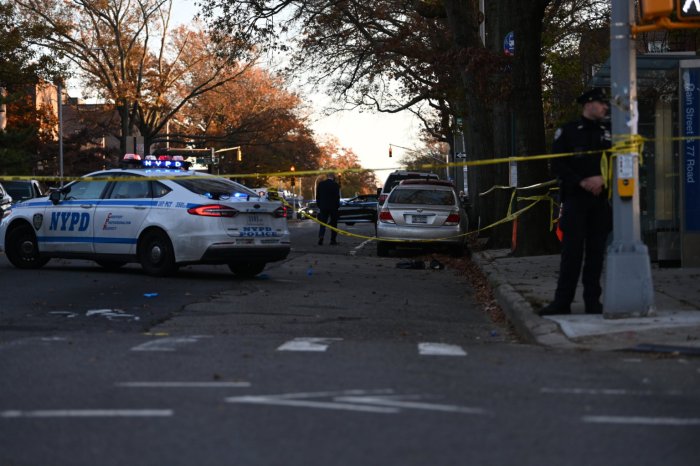By Adam Kramer
Two by two they entered Manhattan from Queens over the East River crossings.
Since last Thursday, cars with only the driver were banned from Manhattan below 63rd Street between 6 a.m. and noon weekdays. Mayor Rudolph Giuliani implemented the ban in hopes of easing the severe traffic that has strangled the roadways since the World Trade Center disaster led to security checks of trucks and vans entering Manhattan.
“Is it always this bad?” screamed a truck driver who was waiting on a checkpoint line to cross the Queensboro Bridge Tuesday. “I came down from Rochester to make one drop and then get out of here. I have never seen anything like this.”
H. Iregbulim of Nassau County, who was commuting Tuesday morning into Manhattan with his wife, said he thought the new regulations were working because there were fewer cars on the road. He said his commute might even be five minutes shorter.
As trucks and cars sat in the bottleneck at Queens Plaza waiting to cross the East River, traffic officers frantically directed commercial vehicles toward the police checkpoints while cars were pushed toward another of the bridge’s entrance ramps and eventual clear sailing over the structure.
The majority of the commuters were calm, realizing that the tie-ups were due to the Sept. 11 attack on the World Trade Center. But there were the few who threw temper tantrums and launched into tirades against the city.
One traffic officer — after a woman in a station wagon berated him — said he and his colleagues were dressed down frequently by a lot of angry commuters.
“The Queensboro Bridge today was a little surprising because of the LIRR trouble,” Tom Cocola, a spokesman for the Department of Transportation said Tuesday. He was referring to signal problems on the Long Island Rail Road, which caused heavy delays coming into Penn Station and could have prompted many regular LIRR riders to take their cars instead.
He said traffic over the Queensboro Bridge had fallen about 33 percent compared to the regular pattern during the morning rush hour. Cocola said normally 32,300 vehicles cross the Queensboro Bridge on a weekday morning, but Monday only 21,204 cars used the span and Tuesday only 21,572 cars crossed the bridge.
Cocola said DOT officials were pleased with the results and the police have noticed cars with three or four people in them.
“We really appreciate all of the commuters’ sympathy,” he said.
Cars with only one commuter have been banned from crossing the Brooklyn Bridge, Manhattan Bridge, Williamsburg Bridge, Queensboro Bridge, Midtown Tunnel and the Lincoln Tunnel, while single-occupancy vehicles are allowed to cross the Triboro Bridge, George Washington Bridge and all of the Bronx crossings into Manhattan.
John Raffino of Bloomfield, N.J., who was waiting to cross the Queensboro Bridge Tuesday morning, said he has to get up earlier in the morning to beat some of the traffic slowed by the checkpoints.
“I have to get up at 6 a.m. to be at work by 8 a.m.,” he said. “But you got to do what you got to do.”
A truck driver from Flushing who works out of Kennedy Airport said the checkpoints have added about 20 minutes to his morning delivery run into Manhattan.
The traffic pileups caused by the checkpoints at the Queensboro Bridge were backed up down Van Dam Street to the Long Island Expressway and from Queens Plaza down 31st Street as far as the eye could see.
Frank Pascual, a spokesman for MTA Bridges and Tunnels, said conditions at the Midtown Tunnel’s toll plaza have been relatively smooth because the police checkpoints are at Green Point Avenue and Van Dam Street, about three-fourths of a mile away.
The westbound traffic along the Long Island Expressway moved at a good clip throughout Queens Tuesday morning, slowing down a bit only at the Van Wyck, LIE and Grand Central Parkway interchange.
On the New Jersey side, “so far the crossings are not doing badly,” Port Authority spokesman Steve Coleman said Tuesday. “There has been about a 20 percent increase in truck traffic because of the closing of the Holland Tunnel.”
He said there was about a 6 percent increase in traffic at the George Washington Bridge, taken by people unwilling or unable to carpool.
Reach reporter Adam Kramer by e-mail at Timesledger@aol.com or call 229-0300, Ext. 157.





























